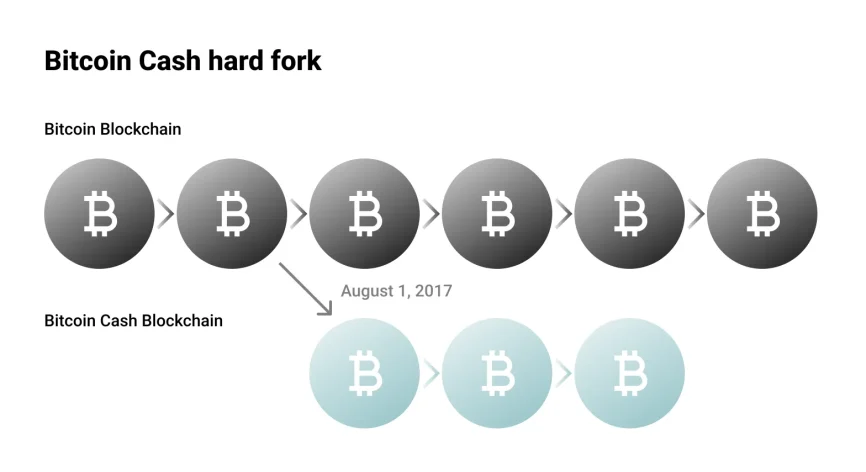What is a Crypto Snapshot?
A crypto snapshot captures the state of a blockchain at a specific block height and records all existing wallet balances, transactions, and metadata at a specific moment.
Table of contents:
A snapshot in crypto is a static copy of a blockchain network state at a definite block height.
The snapshot data includes:
- The overall state of the blockchain
- Wallet balances
- Transaction records for all assets
- NFT metadata
- Smart contract states
The term block height defines the exact block where the snapshot occurs and functions as a timestamp. It ensures accuracy in ownership and transaction verification. Unlike private keys, which remain secure, a snapshot publicly displays wallet-related data, just as it appears on a live blockchain. This transparency allows for fair and efficient token allocations, governance decisions, and even crypto payment verifications.
How Crypto Snapshots Work
A crypto snapshot records each wallet’s balance at a specific moment, allowing blockchain projects to determine eligibility for rewards, airdrops, or governance decisions. Once the snapshot is taken, users can transfer their tokens without affecting their eligibility for that particular event. It ensures fairness, as holdings at the time of the snapshot, rather than subsequent movements, dictate participation.
Snapshots are significantly faster than full system backups, which can take hours or even days. A snapshot can be completed within seconds, making it a highly efficient tool for blockchain operations. Since they are lightweight, they can be created as often as needed.
Are there any snapshot risks?
Snapshots are used for token distributions and governance, but they carry several risks. Never share private keys, as doing so can lead to theft or hacks. Scammers sometimes create fake snapshots to trick users into sending funds or signing harmful transactions.
Technical errors may prevent tokens from being received. High blockchain activity around snapshot time can cause failed transactions or higher fees. Tokens from snapshots may be taxable. Forks linked to snapshots can create confusion about which tokens or chains are valid. Moving tokens before a snapshot can make you miss rewards.
Use Cases of Crypto Snapshots
Snapshots serve various purposes in blockchain ecosystems:
- Airdrops and token distributions. Snapshots allow blockchain projects to distribute tokens based on wallet balances at a specific moment. Once the snapshot is taken, users can move or transfer tokens without affecting eligibility. It can provide a fair and transparent allocation, requiring no extra action from participants. For example, Uniswap recorded a snapshot on September 1, 2020, and distributed 400 UNI tokens to over 250,000 eligible addresses.
It means that once the snapshot is captured, users can transfer or move their tokens afterward without jeopardizing their eligibility for the event. Furthermore, it guarantees that the process remains transparent, as each wallet’s balance is recorded at the fixed moment in time of the snapshot.
- Blockchain hard forks. During blockchain forks, a snapshot determines the exact point at which the ledger is duplicated. For example, in the Bitcoin Cash hard fork on August 1, 2017, all Bitcoin holders at block 478,558 received an equal balance of Bitcoin Cash. This process ensured that both chains shared historical transactions and became independent networks that moved forward.

Bitcoin Cash hard fork, August 1, 2017: Bitcoin holders at block 478,558 received Bitcoin Cash
- Initial exchange offerings (IEOs) and token sales. Crypto exchanges use snapshots to determine who is eligible to participate in token sales or Initial Exchange Offerings (IEOs). Many platforms take periodic snapshots of their users’ balances over a set period to be convinced that everyone has a fair chance to participate in these events.
It is done to prevent any manipulation that could arise from users artificially inflating their balances in the lead-up to an IEO. In some cases, exchanges may even take multiple snapshots and calculate an average balance to further ensure fairness.
- Network upgrades and migrations. When a blockchain undergoes a major upgrade or migration, a snapshot ensures that all account balances, transactions, and holdings are accurately transferred to the new system without loss. It guarantees hassle-free transitions to improved network infrastructures without disrupting user assets.
- Security and recovery measures. Snapshots can also serve as a backup mechanism in case of network attacks or vulnerabilities. If a blockchain experiences a security breach, developers can restore it to a previous snapshot to minimize losses and maintain trust in the network.
Conclusion: the role of snapshots in the crypto ecosystem
Crypto snapshots capture the exact state of blockchain data at a specific point in time. They support accurate token distributions, secure upgrades, transparent governance, and recovery processes.
As blockchain applications grow more complex, the ability to reference precise ledger states can help maintain clarity and operational consistency. For crypto projects, understanding snapshot logic is important when planning token launches, system updates, or migrations.
Other Terms from the Crypto Industry